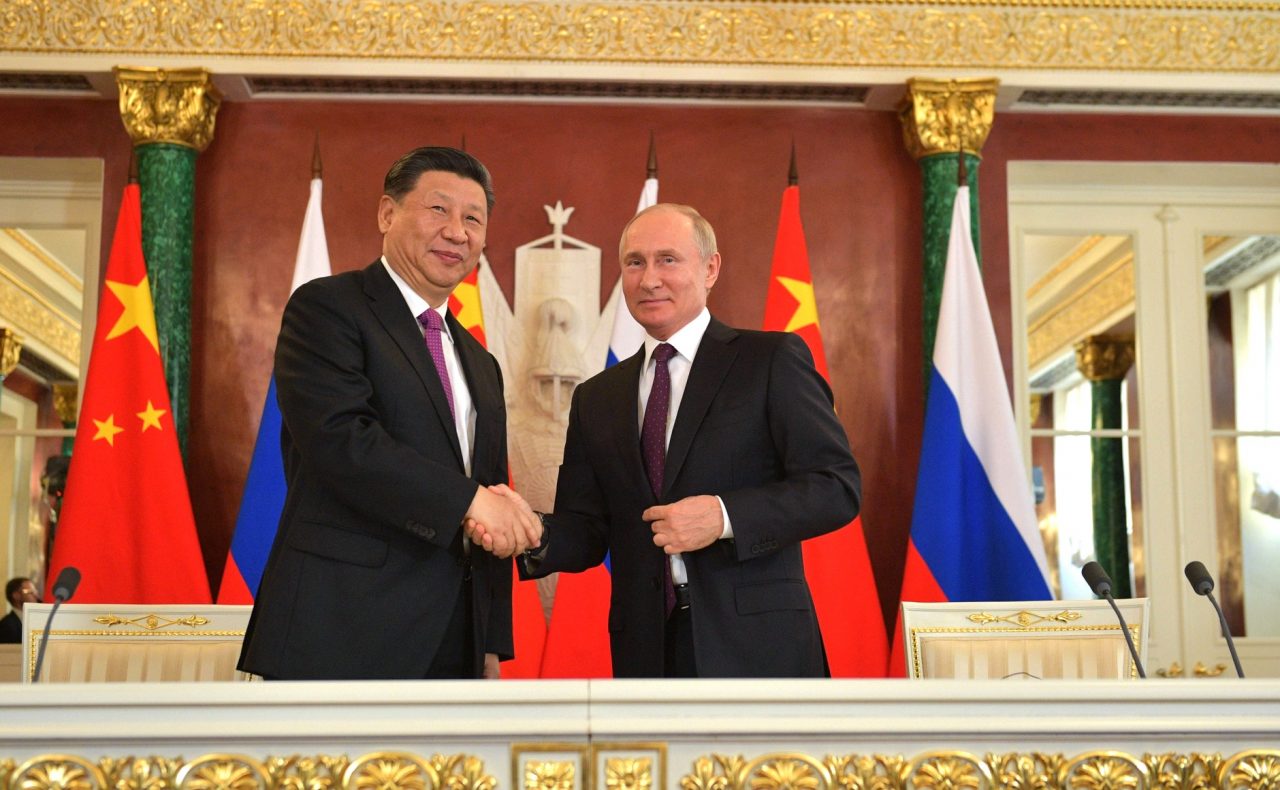Russia’s Defense Ministry announced that Russian and Chinese strategic bombers made cross-landings at the airfields of both countries for the first time during their coordinated aerial patrols on November 30, TASS News Agency reported.
An air group consisting of strategic missile carriers Tu-95MS of Russian Aerospace Forces (VKS) and strategic bombers H-6K of the PLA Air Force carried out air patrols over the waters of Japan and East China Seas amid simmering tensions in the region.
The bombers were escorted by the fighter jets of both countries during some stages of the patrol drills.
The Russian Defense Ministry said in a statement, “For the first time in the history of aerial patrolling, Russian aircraft landed at an airfield in the People’s Republic of China, and Chinese planes landed at an airfield on the territory of the Russian Federation.”
Although Chinese bombers have been previously deployed to Russia for training, this may have been the first time Tu-95 bombers have visited China. The Russian Tu-95 (NATO codename: Bear) is the backbone of Russia’s strategic long-range air attack force alongside the Tu-160. Both these bombers have also seen deployment in the ongoing Ukraine war.
China dispatched its most commonly fielded bomber H-6K which has seen further upgrades. According to the Pentagon’s most recent report on the Chinese military, China now has an upgraded H-6N variant, Beijing’s “first nuclear-capable air-to-air refuelable bomber.”
The Russian Defense Ministry said, “In the course of accomplishing their missions, the aircraft of both countries acted in strict compliance with the provisions of international law. There were no violations of the airspace of foreign states.”
However, the joint strategic bomber patrols came after the United States released a report on a changing Chinese military strategy in the region and noted that the PLA could have about 1500 nuclear warheads by 2035. Intriguingly, these coordinated patrols were conducted ahead of the US next-generation bomber B-21 Raider’s unveiling.
It is pertinent to note that growing military coordination between China and Russia in the Indo-Pacific could fuel anxieties among the US and its regional allies already dealing with what they refer to as China’s “expansionist policies.”
Beijing has strengthened its military interoperability with Moscow despite its bloody war against Ukraine. However, this is not the first time that the two countries have conducted joint patrols with their respective strategic bombers over the region.
In May this year, the Air Forces of China and Russia conducted a joint strategic patrol above the Sea of Japan, the East China Sea, and the West Pacific Ocean as part of their annual military cooperation plan.
Like the November 30 patrols, the Chinese PLA Air Force sent its H-6K strategic bombers, and the Russian Aerospace Forces dispatched its Tu-95MS strategic missile carriers. According to the information revealed later, the PLAAF J-16 fighter jet had also accompanied the bombers on their patrol mission.
At the time, Chinese military analysts had predicted that in the foreseeable future, Chinese and Russian stealth fighter jets – the J-20 and the Su-57, respectively, would undertake joint patrols over the region. However, no such decision has been announced by either side yet.
The recent joint patrols are significant since they have increased the scope of cooperation between the two countries.

Russia-China Military Cooperation
The joint strategic bomber patrols gain significance in light of unhindered Chinese-Russian cooperation, which has been perceived as a security threat by the US. Further, it has also been seen as a significant threat by a key US ally in the region, Japan, which remains embroiled in territorial conflict with both countries.
Earlier, a total of seven warships from both China and Russia cruised between Japan’s Izu islands on September 26-27. The growing presence of Chinese and Russian warships in the region is becoming a primary concern for Japan, reflected in the country’s efforts to modernize its military.
In October last year, the Chinese and Russian naval forces carried out their first joint sea patrol in waters in the West Pacific in a move that Chinese experts hailed as significant for sending a clear signal and practicing real-world drills. Both sides have upped their military cooperation and drills ever since. The cross-landing maneuver on each other’s airfield demonstrates a significant growth in military cooperation.

In September 2022, Russian and Chinese warships kicked off the second joint patrolling of the Pacific region. At the time, the Russian Defense Ministry said that patrolling mission’s objectives were to strengthen naval cooperation between Russia and China, uphold peace and stability in the Asia Pacific region, monitor sea waters, and defend Russian and Chinese maritime economic activity facilities.
China and Russia also conspired to destroy a “hostile submarine” in the Sea of Japan as part of the Vostok 2022 naval drills, as reported by EurAsian Times. China and Russia have deepened their collaboration in response to rising US pressure.
“China doesn’t have any other large, powerful partners in the way that the United States has many European and Indo-Pacific allies that it can rely on. So Russia is by far the most powerful state that is somewhat closely aligned with China,” Brian Hart, a fellow with the China Power Project at the Center for Strategic and International Studies, told CNN earlier.
With China’s unabated expansion in the region, Russia’s increasing presence and cooperation could not augur well for the US, which is trying to counterbalance the Chinese power in the Indo-Pacific.





